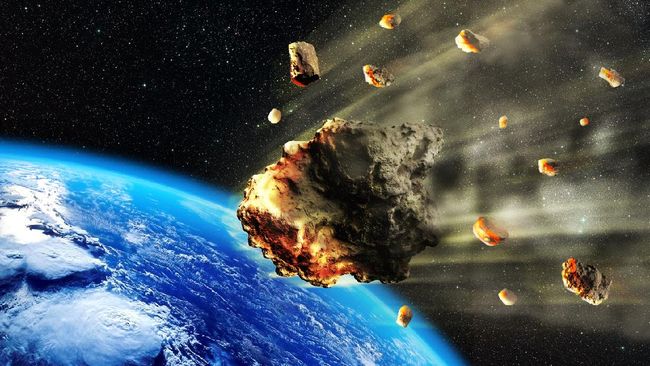Jakarta, CNN Indonesia –
US Aeronautics and Space Administration (NASA) stated asteroid Apophis will not be a disaster for the earth, but at least for the next century.
The asteroid 99942 Apophis, whose name is said to be the chaos and darkness of Egypt, is considered one of the most dangerous asteroids that could potentially hit Earth since its discovery in 2004.
But scientists later revised that opinion after carrying out a precise analysis of the asteroid.
Previous predictions noted the 1,110-foot-wide asteroid may be too close in 2029, 2036, and is unlikely to impact Earth in 2068.
Then astronomers make observations using radar to get a better understanding of the orbits of asteroids around the sun.
The results allow them to rule out the risk of an asteroid hitting Earth in 2068. Previous concerns about 2029 and 2036 have also been ruled out due to improved predictions and research.
“A collision of 2068 is no longer possible, and our calculations show no risk of impact for at least the next 100 years,” said Davide Farnocchia, a navigation engineer and researcher at NASA’s Center for Near-Earth Object Studies (CNEOS) in a statement, citing CNN, Saturday (27/3).
“With the support of recent optical observations and additional radar observations, the uncertainty in Apophis’ orbit has collapsed from hundreds of kilometers to just a few kilometers when projected through 2029,” said Farnocchia.
Scientists at the center of CNEOS use radar and telescopes to study various objects near Earth and understand the dangers that may arise on the planet.
The European Space Agency’s Near-Earth Objects Coordination Center has also removed the asteroid from its risk list. Astronomers also use the Deep Space Network’s Goldstone radio antenna near Barstow, California.
It is one of only three antennas worldwide to allow communication with spacecraft across space. Scientists are also counting on a collaboration with the Green Bank Telescope in West Virginia.
“Even though Apophis recently approached Earth, it is still nearly 10.6 million miles away. Even so, we were able to get very precise information about its distance with an accuracy of about 150 meters (490 feet). This campaign not only helps us rule out the risk of impact. , but also prepares us for extraordinary scientific opportunities, “said Marina Brozovic, a scientist at JPL, in a statement.
(ryh / dea)
– .


